Are you looking to lose weight? Are you confused about all of the different methods and advice out there? Well, you’re in luck! In this article, we will discuss the ultimate fat loss guide that’s based on scientific research.🧐
We’ll cover everything from diet and exercise to mindset and motivation. So whether you’re just starting your weight loss journey or you’ve been struggling for a while, this guide has something for you!
This e-book is quite a read although we’ve tried condensing all the important principles for fat loss as much as possible so you can take on your fat loss journey in a smarter way.
Let’s go!
☝️Disclaimer
The information in this article is for educational purposes only and is not intended as medical advice. Please consult your doctor before making any changes to your diet or exercise routine.
🔥How to lose weight – Simplified
If you’ve lost all your hope of losing weight, that’s understandable. Weight loss is challenging, but it is possible.
Research shows that out of the overweight participants, 20% of them were able to lose weight and maintain their progress for more than a year. In addition, Members of the National Weight Control Registry even made and sustained weight loss for more than 5 years!
Weight loss is possible for everyone.🤛
Like 📍muscle-building, we can dissect the weight/fat loss process into an extensive discussion to better understand the full process.
But let’s start off by simplifying what you need to start, succeed, and maintain your fat loss journey. Don’t worry as we’re going over each aspect in great detail in the later parts of this fat loss ultimate guide (while keeping things simple and practical!).
🍌Nutrition
Calories in vs calories out are the major factor for fat loss.
You need to be in a calorie deficit to lose fat.
How much of a deficit?
It depends on various factors (discussed later), but for most people, a 20-30% reduction in their daily caloric intake is a good place to start.
Make sure you’re getting most of your calories from whole foods to keep you feeling fuller throughout the day while getting the proper nutrients your body needs. While the “calorie is a calorie” approach is still effective in facilitating weight loss, multiple research such as from Krebs, et al and Johnston et al show the efficiency of losing weight with a high-protein and/or low-carbohydrate diet.
We’re going to cover more on what you need to eat to lose weight later in the Nutrional Guide section.
🏋️♂️Workout
People often focus too much on their workout for fat loss. There’s no special training for fat loss. However, a well-structured workout plan will help you improve your progress.
What you need is at least 3 times per week for resistance training such as calisthenics to build or retain as much lean muscle mass and light to moderate cardio to facilitate optimized fat loss.
We’ll be providing you with a workout plan for busy bees such as yourself later in the article.
What if you don’t want to do resistance training?
If you’re in a caloric deficit, then you’ll still lose fat while losing precious lean muscle mass that is needed for daily function. The result: you’ll be skinny fat and potential weakness can come up that can lead to aches and pains.
Cardio isn’t enough. Do resistance training as well such as bodyweight training.
More on this later in the Workout Section.
🏃Physical activity
One overlooked factor for fat loss is your daily general physical activity. It doesn’t have to be a matter of a workout. It’s the little things like taking the stairs instead of the elevator, parking your car a bit further away, or going for a short walk after dinner. In a 2018 scientific literature, their study shows that just staying active even without deliberate exercise can help facilitate fat loss.
All these activities add up over time and can help increase your daily caloric expenditure to lose fat.
⏳Sleep & stress management
Two important aspects that are commonly overlooked are sleep and stress management.
Most people need at least seven to eight hours of quality sleep per night for optimal fat loss (and many other health benefits). Sleep debt (or lacking sleep) has a high association with weight gain.
And manage your stress levels as much as possible. Stress can lead to hormonal imbalances that can sabotage your fat loss journey.
We’re going to talk about this more in the Sleep & Stress Management Section.
👀Mental & emotional strength
Fat loss is a physiological response to the energy deficit you initiated through caloric restriction. However, there is also a huge mental and emotional battle to be fought to win the fat loss battle.
You need to have a rock-solid mindset and be emotionally strong to stay on track when things get tough. Research shows that being unable to keep good mental health puts you at a high risk of following off your fat loss journey.
Starting your fat loss journey with the wrong mindset can easily set you up for failure even if you haven’t even started yet.
Fortunately, we have an entire section dedicated to helping you develop the proper mindset for fat loss success!
More of this topic in the Mental & Emotional Strength Section.
🤸Tracking progress
Last but not least, track your progress. A solid lifestyle change alone is key to a successful and sustainable fat loss journey.
You won’t see results overnight so be patient and consistent with your fat loss journey. And to know if you’ve been making progress or not, you need to track your progress through different methods we’re going to list later in the article.
You can keep it simple by taking photos weekly and measuring every day in the morning when you wake up. Also, don’t forget to record your training sessions!
This will help you stay on track and motivated as you watch yourself slowly achieve your goals.
⚡️Fat loss Dictionary
As much as we want to keep things simple, we still need to gloss over some terms you will commonly encounter when focusing on fat loss.
Understanding the terms will better help you understand the process involved. In turn, these will help you better adhere to the process and make more informed decisions.
👉 Aerobic – Exercises that are low in intensity and can be performed for long periods of time without tiring are considered aerobic. Examples of aerobic exercise include walking, light jogging, and biking.
👉 Anaerobic – Exercises that are high in intensity and can only be performed for short periods of time before tiring are considered anaerobic. Examples of anaerobic exercise include sprinting, lifting weights, and HIIT workouts.
👉 Amino acids – These are the building blocks of protein. Protein is essential for muscle growth and repair, so it’s important to get enough amino acids in your diet.
👉 Calories – A calorie is a unit of energy. When we talk about calories in relation to food, we are referring to the amount of energy that food contains. In order to lose weight, you must create a calorie deficit, meaning you need to eat fewer calories than your body needs. Otherwise, excess calories will be stored as fat.
👉 Glycogen – These are stored carbohydrates in our bodies. When we eat carbs, they are broken down into glucose and stored as glycogen. Glycogen is then used for energy between meals or during exercise.
👉 Macros – Macro is short for macronutrients. These are the three main types of nutrients that we need in our diets: carbohydrates, proteins, and fats. Each macro has a different role in the body and contains a different amount of calories per gram.
👉 Micros – Micro is short for micronutrients. These are nutrients that we need in smaller amounts, but they’re still important for our health. Vitamins and minerals are examples of micronutrients.
👉 Metabolic rate – This is the rate at which your body burns calories. It can be affected by a number of things, including age, weight, activity level, and more.
👉 Water weight – This is the weight of water that is retained in the body. Water weight can fluctuate based on a number of factors which we will cover later in the article.
Now that we’ve gone over some key terms, let’s move on to the different aspects of fat loss. Keep in mind that we’ll be adding more terms along the way but these won’t be recurring as much as the ones we mentioned above.
👊Fat Loss vs Weight Loss
When setting a goal, it’s best to identify what you really want to achieve. For a lot of people, they want to lose weight but what they really mean is they want to lose fat. While weight loss and fat loss are technically the same things, it’s important to make the distinction.
Weight loss refers to losing any type of weight, including water weight, muscle mass, or fat. So if you’re trying to lose weight, you could potentially see results on the scale from losing water weight or muscle mass. However, this isn’t necessarily what you want.
Fat loss, on the other hand, refers specifically to losing body fat. This is the goal for most people when they set out to lose weight. After all, who doesn’t want to lose those pesky love handles or that muffin top?
🏆Benefits of fat loss
f course, the main goal for most people aiming for fat loss is to look better. However, the fat loss goes beyond aesthetics. Losing fat can also improve your health by reducing your risk of chronic diseases like heart disease, diabetes, and stroke.
In addition, fat loss can also lead to increased energy levels and improved mental clarity. When you lose fat, your body no longer has to work as hard to carry around excess weight. This means you’ll have more energy to do the things you love. And as an added bonus, you’ll be able to think more clearly since fat loss can also improve blood flow and oxygen levels in the brain.
In general, we want to achieve fat loss to be healthier. The healthier we are, the better we can live our lives and take care of the ones we love.
Here are some Movement Athletes sharing how their fat loss journey helped them create more bonding moments with their family, and more:
- “I have never felt as good as I do now, EVER!!! I can keep up with my kids and grandkids!” – 📍BJ Scott, 57
- “My daughter is 22, my son is 19, and my youngest son is 13. I want to be able to be around for them. That’s my “why” for why I’m doing this.” – 📍Dave, 49
More stories of Movement Athletes here: 📍Success Stories
Your reason behind your goal of losing weight depends on you alone. But it’s important to remind yourself that fat loss and all its benefits are not just superficial or based on appearances.
🤜The bottom line is, fat loss can help improve your quality of life in so many ways.
😲How does Fat Loss Happen?
Two types of fat cell receptors
Please don’t skip this part as understanding this will help you get a better perspective on your fat loss journey.
There are two types of fat cell receptors that you need to know. These are the alpha receptors and the beta receptors.
The alpha receptors are responsible for storing fat. So when you eat more food than your body needs, the fat is stored in these cells.
On the other hand, the beta receptors are responsible for breaking down fat. So when you’re trying to lose fat, you need to activate these receptors.
🧐Why do I need to know this?
Alpha receptors are distributed unequally in each individual but males and females have certain areas alpha receptors tend to be more dominant. This causes the “stubborn” areas we all hate.
Males tend to have more of them in the midsection which is for protecting the organs. This is why they have more stored fats in their midsection. Females tend to have more of them in the lower body which is for childbearing purposes. This causes them to have more fat in their hips and waist.
As a result, people often ask these questions:
“How do I get rid of my love handles?”
“How do I remove stubborn belly fat?”
“What can I do to slim down my hips?”
Unfortunately, there’s no secret in targeting these stubborn areas.
The good news is, fat loss is possible for everyone. You just need to find the right approach that works for you and know that only by “burning” enough fats in the rest of your body can help you “fix” the stubborn areas.
👆Create a Calorie Deficit
Losing fat, in general, is actually simpler than it actually is.
In order to lose fat, you must be in a calorie deficit. Calories in vs Calories out. This means that you’re eating fewer calories than your body needs.
There are a few different ways to create a calorie deficit but the most common way is by tracking your food intake and making sure you’re eating less than your maintenance calories. Maintenance calories refer to the number of calories you need to eat in order to maintain your current weight.
If you want to lose fat, you need to create a calorie deficit by eating fewer calories than your maintenance level. For example, if your maintenance level is 2000 calories per day, you would need to eat 1400-1700 calories per day in order to lose weight.
A good rule of thumb is to aim for a deficit of 500 calories per day or you can go conservative with your deficit and subtract 15 – 20% of your total caloric expenditure. This will help you lose fat without sacrificing too much muscle mass or energy levels.
However, you can lose fats effectively with 20 – 35 % of your caloric expenditure.
Personalized approach👍
We highly stress the importance of personalization in both nutrition and training programs. Our bodies are different. We all have different goals, body types, and lifestyles. This is why a cookie-cutter approach will only get you so far.
A personalized approach to both nutrition and training will help you lose fat in the most efficient way possible while also helping you keep the muscle mass you already have. In other words, it will help you achieve that toned and defined look that most people are after.
🎯Personalized Workouts
In terms of training, a cookie-cutter workout can result in two causes in the long run:
- Too difficult workouts can cause injuries, movement dysfunctions, and incorrect compensations
- Too easy workouts can cause plateaus, frustrations, and boredom
Personalizing your workouts will help you stay motivated and consistently progress toward your goals.
Read more here: 📍The End of Beginner/Intermediate/Advanced Workouts
A fat loss program should be designed specifically for you, taking into account your individual needs and goals. It should also be based on the latest scientific evidence so that you can be confident that it’s effective.
For your personalized calisthenics workouts, check out The Movement Athlete’s app. Their powerful AI generates a dynamic and adaptive workout that’s based on your current skill level and lifestyle. To begin, the AI first needs to identify your strengths and weaknesses through an assessment.
🎯Personalized Diet
There is no perfect diet that can work for everyone. We’re all different and we all have different dietary needs.
A personalized diet is one that’s based on your specific goals, body type, and lifestyle. It should also be something that you can stick to in the long term so that you can make it a sustainable part of your life.
In addition, the taste and cuisine that you’re going to incorporate into your diet are crucial as well. Food that you actually enjoy will help you stick to your diet.
If you want help creating a personalized diet, we recommend working with a certified nutritionist or dietitian. They can help you create a plan that’s based on your individual needs and goals.
✨Mental & Emotional Strength
What usually makes or breaks your fat loss journey is the mental and emotional strength you have to sustain the process. Fat loss is physiological, but there is also a strong psychological aspect to the process if you want to maintain it.
As we’ve mentioned earlier, to achieve sustainable fat loss, a lifestyle change is needed. It may seem simple and easy to do, but it’s actually more challenging than it actually is.
Once we learned a routine (for example, having a sedentary lifestyle), our mind and body get used to these habits that we no longer need to think to do or choose them. Breaking these bad habits takes time and mental and emotional strength.
We usually tend to opt for the path of least resistance. That’s how our mind works, but we have to fight it.
Making the first step of choosing the fat loss journey already shows mental & emotional strength. The next challenge is having enough capacity to sustain it until new habits are formed so that staying healthy and active becomes second nature.
Mindset and Motivation✔️
Let’s talk about mindset and motivation. Losing weight is not an easy task, so it’s important to have the right mindset going into it.
Remember that you are in control of your own fat loss journey. You are the one who decides what you want to achieve and how you’re going to get there.
It’s also important to have a strong why. Why do you want to lose fat? What’s your motivation?
Your motivation can be anything from wanting to improve your health, to wanting to feel more confident in your own skin.
Whatever your motivation is, make sure it’s something that will keep you going when the going gets tough.
Because there will be times when it does get tough. There will be times when you’ll want to give up. Progress will sometimes be slow. You will hit plateaus. You might not be hitting your expected results.
But if you have a strong why and you stay motivated, you’ll be able to push through and achieve your fat loss goals.
We’re not trying to put you down or give you a negative perspective of the journey. Having a realistic mindset will also help you stay determined during the ups and downs.
Losing fat is not an easy task but it’s definitely achievable. It takes time, effort, and dedication but it’s worth it in the end.
🥺Why do most people fail in losing fat?
There are many factors that hinder people from achieving their goals of losing fat.
However, there are four major and common issues why most people fail to accomplish this goal: Focusing too much on exercise, an all-or-nothing mentality, expecting unrealistic goals, and failing to adhere to a caloric deficit.
❌Failure to sustain the caloric deficit
Like what we’re going to tackle more in the article and what we’ve already mentioned, caloric deficit facilitates fat loss. Without it, there’s no way you’re going to lose fat no matter how much intense workout you do unless surgically done.
This topic can be a separate article on its own. There are many layers and factors which can cause you to eat too much than what you need to drop your ideal body fat levels.
Getting in a caloric deficit doesn’t mean you have to cut out all the fun and enjoyment in eating. This just means you have to get a healthier relationship with food.
Don’t treat food as your enemy. Instead, treat them as an ally to fuel you for goal and everyday life.
❌All-or-nothing mentality
When starting the fat loss journey, some people have an all-or-nothing mentality. They go all out in the beginning and then they burn out quickly because it’s not sustainable.
The key is to take it one step at a time. Making small changes in your diet and lifestyle that you can sustain in the long run.
Jumping straight into a strict caloric deficit with strenuous workouts is like jumping into a workout without warming up.
For example, instead of going on a strict diet, start by making small changes in your eating habits.
Instead of severely restricting your caloric intake, try just reducing your intake or opting for healthier alternatives. And instead of working out for a full hour every day, start with 20-30 minutes and gradually increase the duration as you go along.
Small changes are more sustainable in the long run and they’ll eventually add up to big results.
❌Unrealistic results
Most people fail to maintain a caloric deficit because they tend to rush the process and expect unrealistic results in an unrealistic time frame. Expecting unrealistic goals can make you lose the battle even before you actually start your fat loss journey.
In a 2021 study on adherence to a very restrictive diet for clinically overweight individuals, one of the main reasons some fail to stick to their plan is that they were expecting unrealistic results short term. Ultimately, their frustration leads to them quitting the diet for the experiment.
What do we get from this?
We need to take on the challenge of fat loss long term.
Losing fat takes time, consistency, and discipline. It’s a gradual process that requires you to be patient and adhere to your plan.
Rushing the process will only lead to frustration and eventually quitting altogether. So if you want to lose fat, take it slow but steady. Remember, consistently putting in the work is the key.
And lastly, failing to exercise discipline and consistency are also common reasons why people fail in losing fat. As we’ve said, it’s a gradual process that requires time and effort. You can’t expect to see results overnight.
You need to be consistent with your diet and workout routine in order to get the results you are looking for.
❌Focusing too much on workout
Have you heard of the saying, “you can’t out-exercise a bad diet”?
xercise will definitely boost the effects of the caloric deficit you’re creating. However, one tendency people make is to rely too much on workouts to facilitate fat loss.
Workout does help, but fat loss is 70% diet and 30% exercise. So if you’re not paying attention to what you’re eating, then all the workouts in the world won’t make a difference.
Again: You can’t out-exercise a bad diet.
Let’s take this example.
Here’s an average calorie per 30-minutes of recreational activity according to Harvard Medical School.
| Activities | 125-pound person | 155-pound person | 185-pound person |
| General weight lifting | 90 | 108 | 126 |
| Yoga | 120 | 144 | 168 |
| Moderate calisthenics | 135 | 162 | 189 |
| Walking 3.5 mph | 107 | 133 | 159 |
| Running 5mph | 240 | 288 | 336 |
Complete list here: Calories Burned in 30-minutes of Leisure and Routine Activities
Based on the research conducted by Harvard Health, you’ll notice that even the most intense workout sustained for 2 hours only uses a few calories. In fact, our bodies use more calories to maintain daily voluntary and involuntary functions of our bodies.
Now, let’s take a look at the calorie content of some popular food:
A Big Mac from Mcdonald’s has 540 calories while a Whopper from Burger King has 630 calories.
A slice of cheese pizza has 285 calories while a chocolate chip cookie has 160 calories. You just have to eat a burger from Mcdonald’s, and you can already throw your caloric deficit out of the window.
We need to understand that fat loss happens in the kitchen and not in the gym. So if you want to lose fat, make sure you’re paying attention to your diet first and foremost.’
While focusing on diet, we still don’t want to be too restrictive that you might develop an unhealthy relationship with food. Find a healthy balance that you can stick to and be consistent with. That way, you’ll see results in the long term.
So there are many reasons why people fail to lose fat despite trying their best. But if you’re patient, focus on creating a caloric deficit, exercise discipline, and stay consistent with your diet and workout routine,
🔎How to track fat loss?
Weighing scale💯
If we’re focusing on dropping weight, the simplest method is using a weighing scale. Weighing in can help give you an indication of whether your fat loss efforts are working.
Just keep in mind that you need to be performing some form of resistance training such as calisthenics to maintain as much lean muscle mass as possible.
There are smart scales available that also measure body composition providing body fat, muscle mass, and even water weight percentages. However, a 2021 study shows that it’s not accurate enough and could only provide a very rough guide for your body composition. If you’re interested in getting precise percentages, you can look into DEXA, hydrodensitometry test, or the pinch test performed by trained specialists.
Body measurements and photos💯
Other ways to track fat loss are through measurements and progress photos. Using a tape measure, you can track circumference changes in different areas such as your waist, hips, thighs, and arms.
Progress photos are also a great way to track changes in your body composition. Make sure to take photos from different angles (front, back, and side) in similar lighting conditions (preferably no flash) and wear minimal clothing.
Performing these fat loss tracking methods will give you an idea of whether your fat loss efforts are working.
Here are some things to keep in mind when using a weighing scale:
- Weigh yourself at the same time every day, preferably in the morning before you eat or drink anything.
- Wear light clothing or no clothing.
- Don’t exercise within two hours of being weighed.
- Make sure the scale is on a level surface.
- Calibrate your scale regularly.
Progress is not linear💯
Fat loss is a slow and gradual process. You might not see results immediately, and that’s okay. Just trust the process and keep going.
One way to stay motivated is to set small fat loss goals instead of going for an all-or-nothing approach. For example, you could start by aiming to lose 0.25kg.
Also keep in mind that focusing on weight alone can be frustrating as there are also many factors that can affect your everyday weight such as water weight or hormonal changes. These can have a massive impact on your weight even though you are potential making progress.
A better perspective to watching your weight is looking at a positive TREND in your weight change. If you’re expecting that you’re going to decrease your weight every single day, then you’re setting yourself up on frustration.
nstead, record your weight daily then average them at the end of your week. This way, you get to see the improvements in a better perspective. Alternatively, you can also input your measurements in excel and create a graph so you can better visualize the changes.
Holistic tracking💯
Weight is not the only determining factor if you’re making progress especially when you’re achieving to lower body fat percentage.
Track your waist, your strength performance, write how you feel, your energy levels, your movement. All of these factors can improve dramatically even if sometimes , your weigh scale won’t move.
Don’t give up and do the work!
😱 Should men and women approach the process differently?
Earlier in the article, we mentioned some physiological differences between males versus females. But does this mean we also have to take these differences into consideration when approaching fat loss?
The answer: No.🤛
In a 2015 systematic review, the study found that there is a statistically insignificant difference in weight loss between men and women after workouts and workout + diet protocols. This indicates that men and women can follow a combination of exercise and caloric restriction to facilitate weight loss.
Workouts directed towards men like what you see in Men’s magazines are created as an excellent marketing tool. The same goes for women’s workouts you’ll see in magazines.
🤯What should I eat? – Nutrition
Nutrition is the major factor in fat loss.
Keep in mind that like workouts, diet and nutrition don’t have a one-size fits all answer.
Each person is different and would require a different approach. Everyone has different metabolisms, lifestyles, genetics, and other factors that can affect your fat loss journey.
However, there are certain principles that apply to the general population that we could use as nutritional guidelines for our goals.
When it comes to fat loss, nutrition is the major factor. You can exercise all you want, but if your diet is not in check, you won’t see results.
🎯Calories-In Versus Calories-Out🎯
If you want to drop your weight or show your 6-pack abs and built muscles underneath by removing the fat covering them, then you have to eat (calories in) fewer calories than the calories your body burns (calories out). We call the total we burn Total Daily Energy Expenditure or TDEE.
TDEE for each person is different and changes as we age, get more or less active, and as our weight changes. To know your TDEE, you need to measure it using an online calculator or by working with a coach.
A calorie deficit can be achieved in two ways: either by eating fewer calories (diet) or increasing the number of calories you burn through physical activity, or better yet, doing both.
However, as we’ve mentioned earlier, food intake is more crucial in fat/weight loss as you will see in this infographic below:
We can break down TDEE into four categories:
Basal metabolic rate – the calories you burn just by being alive and keeping all your body functions running – accounts for 60 to 75% of the daily calorie expenditure.
Non-exercise Activity Thermogenesis (NEAT) – the energy you expend for everything that isn’t sleeping, eating or sports-like exercise – varies considerably from person to person and can be as high as 800 calories per day.
Thermogenic effect of food – the energy used to digest, absorb and metabolize the food you eat – is generally only a few hundred calories per day but it varies depending on the composition of your diet. For instance, protein has a higher thermic effect than fat or carbs.
Exercise – If you’ll notice, exercise has just a small amount of calories burned. Of course, this can increase depending on the amount of exercise you’re getting done daily.
For athletes, this number is usually high which is why they tend to have excellent physique even without directly working on it. Their low body fat and defined muscles are only byproducts of their high level of activity.
For us mortals, exercise is also a crucial component in facilitating fat loss and building muscle. However, it plays a lesser role ramping up your TDEE because of the inherently fewer calories exercises burns.
🔥Macronutrients
These nutrients are what your body needs in larger quantities. Meeting the required nutrients is crucial if you want to efficiently lose fat. These macronutrients help fuel the body for your workout and daily function.
While calories are key for initial weight loss, it’s also important to focus on macronutrients if you want sustainable results.
✅Protein
Protein is essential for building and repairing muscle tissue. It’s also necessary for other functions in the body, such as making enzymes and hormones.
Protein is made up of amino acids, which are the building blocks of muscle tissue. There are 20 different amino acids that the body needs, but nine of them are considered “essential” because the body can’t produce them on its own.
The best sources of protein are animal-based, such as beef, chicken, fish, and eggs. However, there are also plant-based sources of protein, such as beans, legumes, and quinoa.
When trying to lose fat, it’s important to eat enough protein because it helps to preserve muscle mass. The recommended intake is 1.2 – 1.6 grams per kilogram of body weight. This is for an optimize weight reduction while you can get away with a 0.55 – 0.88 grams per kilogram of bodyweight for a standard protein intake.
✅Carbs
Carbohydrates, also known as carbs, are the body’s main source of energy. They are found in a variety of foods, including breads, pastas, rice, fruits, and vegetables.
There are two types of carbs: simple carbs and complex carbs. Simple carbs are made up of one or two sugar molecules and are found in foods such as candy, cookies, and syrup. Complex carbs are made up of three or more sugar molecules and are found in foods such as starchy vegetables, legumes, and whole grains.
Research shows that focusing on complex carbs allows you to maintain a higher level of satiety throughout the day. This means you’ll feel much fuller and will tend to stick more to your recommended caloric deficit.
If you’re going for the lower range of the carbohydrate intake, make sure you make up for it through ramping up your protein consumption. This can help assist in rapid weight loss thanks, but in the long term, weight loss is generally the same compared to moderate intake of carbs.
The recommended intake of carbs is 290 – 310 grams per day averaging 47% – 64% of calories from carbs.
✅Fats
Fat is not the enemy. It’s an essential nutrient that the body needs for a number of functions.
Fat is made up of fatty acids, which are used for energy, cell growth, and other important processes in the body. Fatty acids can be either saturated or unsaturated.
Saturated fats are packed fatty acids that are solid at room temperature. They are mostly found in animal-based products such as meat and dairy. They’re also found in some plant-based oils, such as coconut oil and palm oil.
Unsaturated fats are not packed together as tightly and are liquid at room temperature. They are found in plant-based products such as nuts, seeds, and avocados. They’re also found in fish.
When trying to lose fat, it’s important to eat the right kinds of fat. Saturated fats should be limited because they can lead to weight gain. Unsaturated fats, on the other hand, are beneficial and should be included in your diet.
The recommended intake of fat is 20-35% of daily calories. For a 2000-calorie diet, this works out to 44-78 grams of fat per day.
🔥Micronutrients
Micronutrients, as the name suggests, are nutrients that are needed in smaller quantities compared to your macros.
Here are a list of micronutrients that are crucial for fat loss and just to have a healthy body in general.
☑️Fiber
Fiber is a type of carbohydrate that the body cannot digest. It’s found in plants such as fruits, vegetables, and whole grains.
Fiber helps to regulate digestion and can also help to reduce cholesterol levels. It’s an important nutrient to include in your diet, especially when trying to lose fat.
A 2019 research shows that fiber is a high predictor of sustained fat loss over the course of 6 months. In addition, a high fiber intake helped particiapnts of the study to stick to their diet.
The recommended intake of fiber is 20 grams a minimum per day.
☑️Calcium
Calcium is a mineral that’s found in foods such as dairy, leafy green vegetables, and nuts. It’s important for bone health and also helps with muscle contractions.
In addition, a 2014 study reported that calcium supplementation can enhance weight loss facilitated by a caloric deficit.
The recommended intake of calcium is 1000 mg per day.
☑️Iron
Iron is a mineral that’s found in animal products such as red meat and poultry, as well as in leafy green vegetables and legumes. It’s important for the transport of oxygen in the blood and for a healthy immune system.
Recent 2021 study proves that iron supplementation (granted you’re iron deficient) can help minimize fat gain.
The recommended intake of iron is 14.8 mg per day for women and
8.7 mg per day for men.
☑️Potassium
Potassium is a mineral that’s found in a variety of fruits and vegetables, such as bananas, sweet potatoes, and tomatoes. It’s important for proper fluid balance and muscle function.
Current research shows that higher dosage of potassium along with a balanced macronutrients and caloric deficit can speed up fat loss.
The recommended intake of potassium is 1600 -2000 mg per day.
☑️Magnesium
Magnesium is commonly found in whole grains, nuts, and leafy green vegetables. It’s important for energy production, bone health, and muscle function.
Evidence shows that magnesium can help increase your rate of weight loss.
The recommended intake of magnesium is 400 mg per day.
💧Supplementation
Individual difference is a crucial factor in determining what you need for fat loss or for daily function.
There are tons of supplements you can get nowadays. However, the one you need depends on what your body lacks. A better way to address this is by getting a blood test to accurately determine the lacking nutrient in your diet.
If you’re consistently taking in fruits, vegetables, protein, carbs, and fats in moderation, you generally don’t need to take in any supplementation. Whole foods will suffice.
You can also get supplements that will help fill gaps of deficient micronutrients mentioned above.
However, we can still take one type of supplementation that is commonly associated with muscle-building but can also assist in fat loss and this is whey.
✔️Whey supplementation
Protein is crucial for fat loss. It helps to build and preserve muscle mass, which in turn helps to burn more calories.
Whey protein is a type of protein that’s derived from milk. It’s a complete protein, meaning it contains all the essential amino acids your body needs.
It’s also very easy to digest and is absorbed quickly by the body. For these reasons, it’s often used as a post-workout supplement.
Whey is often used by athletes and bodybuilders to help build muscle, but it can also be helpful for fat loss. In addition, it’s so easy to intake and delicious depending on the flavor you enjoy.
A study in 2008 showed that whey protein was more effective than other types of protein at reducing body fat.
The recommended intake of whey protein is 1 to 2 scoops (25 – 50 grams) of the supplement per day. Usually a measuring cup is included in the whey container.
You can also refer to your protein requirement as a guide on your protein intake.
Look for WHEY PROTEIN ISOLATE. Look for fewer calories. Brand is usually irrelevant as long as you have the necessary protein and the flavor that you enjoy.
✔️Caffeine
Another easy supplement you can take for better fat loss is caffeine. Caffeine is a stimulant that has been shown to boost metabolism, increase fat burning, and reduce appetite.
You can take your caffeine early in the morning or just before your workout for that added energy boost. It can act as your pre-workout.
You can get caffeine from many sources. However, we recommend opting for your black coffee and green tea. Avoid getting caffeine from sugary drinks because of the high added sugar which means more calories.
The recommended dose of caffeine is 200-400 mg per day.
Moderation🎯
👊Not all calories are created equal
Most people focus too much on calories-in-calories-out alone. However, the quality of the calories you consume is just as important as the quantity.
A study conducted by the National Institue of Health found that relying on processed foods can result in overeating and weight gain.
In addition, relying on processed foods can increase the risk of cardiovascular diseases and lower mortality rate.
For example, two foods can have the same number of calories, but one may be healthier than the other. A piece of cake and a cup of broccoli both have around 150 calories, but the cake is high in sugar and low in nutrients, while the broccoli is the opposite.
It’s important to focus on eating healthy, whole foods most of the time. This means consuming plenty of fruits, vegetables, lean protein, and healthy fats.
You can still enjoy the occasional treat, but moderation is key. A good rule of thumb is to 80/20 your diet. This means eating healthy 80 percent of the time and allowing yourself some indulgences 20 percent of the time.
Eating perfectly clean is effective for fat loss but not always sustainable.
Eat what you enjoy, and give your soul the enjoyment it deserves from time to time for all the hard work you put into your diet.
🌟Steps to fix your caloric and nutrient needs
👍Identify your caloric requirement
As we’ve emphasised before, the individual difference is a major factor. It’s too difficult to directly identify the exact requirement for each individual. However, we can get an estimate of the calories and nutrients you need and go from there.
An easy way to do so is by inputting your age, weight, height, and general activity level (workout and daily movements included) in a caloric calculator.
👍Set your fat loss rate
Once you’ve calculated your caloric requirement to maintain your current weight, the next step is to set the number of calories you’re going to remove from your intake to create the caloric deficit.
Opting for minimal fat loss in given time frame is ideal so you can ease into the change in diet. Drastic restrictions can be effective but comes with some possible side effects such as dizziness, nausea, irritability, mood changes, and fatigue.
Aim to get a caloric restriction of subtract 20% out of your TDEE.
Maximum caloric restriction
SERDS or severe energy restriction diet is when you hit the maximum amount of caloric restriction per day.
👍Identify your macronutrients
In most cases, these calculators come with an option that provides the macronutrients needed.
Take note that these calculators do not take into consideration specific conditions such as hormonal imbalances. If you have any medical conditions, please consult with your doctor before making any changes to your diet.
👍Preparing your diet plan
Once you’ve gathered your caloric and macronutrient requirements, the next step is your meal planning. Preparing a diet plan throughout the week will make it easier for you to hit your numbers.
There are many ways to do this, but a simple method is by portioning your meals into containers. This will help you to better control your portions and avoid overeating.
Another way is to meal prep or cook all your meals in advance. This can be time-consuming, but it’s definitely worth it. Meal prepping ensures that you always have a healthy meal on hand and reduces the temptation to eat unhealthy foods.
You can also make use of apps or online tools that help with diet planning and tracking. Some popular ones are MyFitnessPal and FatSecret.
💯Best option: Consulting a good registered dietician
While you can count your own calories, it’s still better to get advice from a professional.
A good registered dietician will be able to take into consideration your age, weight, height, activity level, and any medical conditions you may have before coming up with a plan that’s best for you.
Not only will they help you determine how many calories and macronutrients you need, but they can also offer advice on what types of foods to eat.
If you’re not sure where to start, we recommend finding a good registered dietician in your area.
Micronutrients
Unfortunately, estimating your micronutrient isn’t accurate enough without a blood test to identify your current situation.
However, a good rule of thumb is to make sure you’re getting a wide variety of fruits and vegetables each day. This will help ensure you’re getting the vitamins and minerals your body needs.
😤What about cheat days or cheat meals?
Cheat days or cheat meals are when you eat foods that are high in calories or unhealthy.
While there’s nothing wrong with indulging every once in a while, it’s important to not go overboard. Eating too many cheat meals can offset all the progress you’ve made and make it harder to reach your goals.
As mentioned earlier, it’s best to engage in a moderate intake of these satisfying food types. If you prefer these cheat days, then schedule them into your fat loss journey to avoid overeating.
Cheat day hack😲
An effective way to maximise your cheat days while still getting enough nutrients is by opting for high-caloric foods that are also packed with protein. Examples of these are burgers, pizzas, Sandwiches, stakes, and sushi.
Aim to minimize empty high-caloric food or foods that don’t have many nutrients in them such as chips, candy, fries, and the like.
Again, we’re not saying to abstain from them forever. Just keep them at moderate amounts.
Workout🤸
How crucial is the workout for fat loss?
To be honest with you, you can get a lot of fats and weight off of you from a caloric deficit alone.
However, if you want to improve your overall physique, have a higher metabolism, and get better daily movement function, working out is the way to go.
🔥Resistance training
Building strength and muscle can be achieved through resistance training. This could be in the form of weightlifting, bodyweight exercises, or using resistance bands.
Calisthenics is a highly effective, yet still underrated, form of strength training. It uses your bodyweight to build muscle and improve movement function.
In a recent 2022 systematic review, researchers found that strength training can help assist in fat loss even without adding the popular aerobic exercise. In the study, participants engaged in strength training along with caloric restriction lost fat more than participants with just eating at a deficit. Along with losing weight, much lean muscle mass was retained.
Strength training isn’t only about build maximum force production. It can translate to 📍real world strength if you perform movements that can be used outside of your training. This is one of the advantages of calisthenics training.
🔥Resistance training protocols
There are many options you can choose from when opting for resistance training.
The first step is choosing between weight lifting or bodyweight training.
Both approach are excellent for building strength and muscle. While we love calisthenics, we cannot deny that fact that weight lifting has its own advantages and disadvantages.
You can read more about it here: Weightlifting vs Calisthenics
Calisthenics is often linked to building endurance and is only for beginners. However, this is just a common misconception. You can 📍build muscle and strength with bodyweight training alone. It all boils down to staying progressive with your training which many people fail to do.
Let’s say you choose calisthenics as your training approach. The next step is opting for a calisthenics training structure that would fit your lifestyle. This is why we stress the importance of personalisation and adaptiveness of a training program. We have different starting skill levels, schedules, rate of progress, and many other factors that can affect your training plan.
But to give you a general guide of a training program, here’s a brief of a 3-day full body calisthenics workout that can be scaled for beginners to advanced.
You can read more about this workout here: 📍FULL BODY CALISTHENICS WORKOUT – Without Equipment
🔥Cardio
Cardio is so effective for fat loss. But let’s be honest, it sucks. Most people don’t enjoy cardio, but it’s a crucial exercise approach for optimal fat loss.
In the previous study that was conducted by Villareal et al., aerobic/cardiovascular training has the most impact in producing the biggest fat loss over a time frame compared to resistance training and a combination of resistance training and cardio.
This is likely because cardio training helps to improve insulin sensitivity, which is a major fat-burning hormone in the body.
There are two types of aerobic training that we’re going to cover. The most popular one is steady-state cardio and the rising star for busy individuals, high-intensity interval training, or HIIT.
Read more: 📍15 Bodyweight Cardio Exercises
🔥HIIT
A lot of people think that they need to do long, drawn-out cardio sessions in order to lose fat. But this isn’t necessarily true. You can actually burn just as many calories, if not more, from shorter, high-intensity workouts.
HIIT is a type of cardio when you alternate between periods of high-intensity and low-intensity exercise.
You can choose your own exercises you enjoy with the exception of choosing strengthening exercises such as push-ups, pull-ups, squats or other weighted variations.
This workout is popularized by Dr. Tabata who popularized the Tabata training. For example, you could sprint for 30 seconds followed by a minute of walking then repeat the process for a period of time which is around 10-20 minutes.
HIIT has been shown to be more effective at fat loss than steady-state cardio, while also being shorter in training duration.
One study proved that 10 minutes of HIIT can be as effective as 30 minutes of moderate-intensity cardio when it comes to cardiovascular health benefits.
However, for fat loss, one study shows that you would want to target at least 20 minutes of HIIT to maximize the metabolic benefits.
Here’s a complete guide on HIIT: 📍20-minute HIIT Workout for Fat Loss
When performing HIIT, because of the inherent high intensity of the training, recovery can impede your resistance training. Keep in mind that you need to perform your HIIT and resistance training on a separate day.
🔥Steady-state cardio
HIIT can take a shorter period of time to do, but it can be grueling as you need to perform a high enough intensity to maximize the effects of the training. This intense training can be demotivating for some and can affect your recovery if you’re also implementing proper resistance training in your schedule.
So you can still opt for steady-state cardio. This type of aerobic training is more straightforward. You can do it at a moderate pace that you’re comfortable with for an extended period of time, usually 30-60 minutes.
Walking, jogging, and biking are all examples of exercises you can do for steady-state cardio. The key is to find something that you enjoy doing so that it doesn’t feel like a drag to stick with it.
🔥Walking is underrated
Many fail to realize a very simple, but highly effective exercise that EVERYONE should be doing EVERYDAY.
This is one of our favorite aerobic training. It’s not a secret, specialized exercise. It’s walking. In fact, one can claim that it can be the best (yet underrated) exercise for fat loss!
This simple movement is easy to do and can be done anywhere at any time. You can even do it while you’re doing other activities like watching TV, working at your desk, on a phone call, cooking dinner, or even on a treadmill.
Walking has a lot of benefits. It’s low-impact so it doesn’t put too much stress on your joints and recovering muscles. This means you can do it daily without negatively affecting your gains compared to other forms of cardio.
This is important because you would want to be retaining as much lean muscle mass as you’re losing fat.
In addition, it’s also been shown to improve insulin sensitivity and fat oxidation which means more fat loss.
Whether you’re aiming to shed a few pounds or trying to remove body fat to reveal the 6-pack underneath, walking can help you create that necessary caloric deficit that you need.
Try to walk at least 30 minutes a day and increase the duration and intensity as you get used to it. You can eventually work your way up to walking for 60 minutes a day at a moderate pace.
A study found that walking for longer periods of time at a slow pace can offer greater fat loss compared to walking fast in a short time. You can opt walking your dog to get you started with your walks.
Beginners and advanced athletes both can benefit from such a simple movement. Beginners can use this to boost their progress. Advanced athletes use this to break plateaus and hit those lower body percentages.
🏋️♂️Staying active to increase NEAT
If you don’t like adding deliberate exercise, then another not-so-secret strategy is just to increase your overall physical activity. NEAT or non-exercise activity thermogenesis is the fancy way of saying the number of calories you burn from activities other than sleeping, working out, or getting that caloric deficit.
This includes activities such as fidgeting, standing up often, taking the stairs instead of the elevator, and walking to a co-worker’s desk instead of sending an email. All these little things add up and can increase the number of calories you burn without having to put in the extra effort.
A study has shown that those who increased their NEAT by just 100 calories per day were able to lose weight without needing to change their diets.
So if you’re trying to avoid the gym or hate exercise, then find ways to increase your overall activity level and you’ll be on your way to fat loss.
Small movements add up in the long run.
💥Choosing the workout for your fat loss journey
To keep it simple, you would want to keep an active lifestyle with at least 3 sessions per week of resistance training.
Hitting at least a total of 7000-10000 steps per day along with deliberate aerobic and resistance training maximizes the fat loss process.
Along with your walks, you would want to get your resistance training in check.
Here’s a sample workout you can do at home to build muscle mass while losing weight.
- Perform 3 times per week
- Perform warm-ups – 📍Ultimate Guide to Calisthenics Warm-up
- Cooldown recommended but not necessary
| EXERCISE ORDER | Muscle Target | Exercise Example | Sets | Reps | Rest |
| Exercise 1 | Chest | Dip progressions,
Push-up progressions |
3 | 8 – 12 | 2 mins |
| Exercise 2 | Glutes & Hamstrings | Glute-ham bridge progressions,
Nordic curl progressions |
3 | 8 – 15 reps | 90 secs |
| Exercise 3 | Back | Pull-ups, Inverted rows | 3 | 8 – 12 reps | 2 mins |
| Exercise 4 | Quads | Quad extension progressions, Lunges, Squats | 3 | 5 – 10 reps | 90 secs |
| Exericse 5 | Shoulders | Pike push ups,
Handstand progression |
3 | 5 – 10 reps | 2 mins |
| Exercise 6 | Triceps | Tricep push-ups, Bench tricep dips | 3 | 10 – 20 reps | 90 secs |
| Exercise 7 | Biceps | Chin-ups, Bicep bodyweight row | 3 | 10 – 20 reps | 90 secs |
| Exercise 8 | Calves | Calf raise progressions | 3 | Until Failure | 60 secs |
| Exercise 9 | Corework | Hollow body hold | 3 | 30 – 45 secs | 60 secs |
For more information regarding the exercises you can use, read here: 📍Calisthenics Full-Body Workout At Home (For beginners to advanced)
Autoregulation
Seems like a complex term, but it’s actually simpler than it sounds like. Autoregulation is the ability to monitor your own training intensity and make adjustments accordingly.
Too much or too little volume/intensity can lead to suboptimal results.
If you’re not sure how to autoregulate, then consider hiring a coach or personal trainer who can help you design a program that’s right for you.
🩺Sleep & Stress Management
Lastly, two other important factors that commonly get neglected are sleep and stress management.
In fact, you’re getting stronger during your rest and sleep rather than during your workouts.
😴Sleep
During your sleep, your body is able to recover and repair all the muscles you’ve broken down during your workouts.
This is when growth hormone is released and fat burning occurs. So if you’re not getting enough sleep, then you’re not maximising fat loss or muscle growth.
While there is not an exact number of hours of sleep for every person, you should be aiming for at least hours of high-quality sleep every night. Research shows that each person requires different hours of sleep. Some can function well with only 6 hours, while for others 8 hours is optimal.
In addition to the number of hours, you also need to factor in the quality of sleep. This means making sure that you get continuous and relaxing zzzs.
😉Sleeping tips
- Avoid screen time through your mobile device, TV, or computer at least an hour before bed
- Keep a cool and comfortable environment in the bedroom
- Establish a regular sleep schedule in which you can stay consistent with
- Avoid caffeine intake at least 6 hours before bedtime
- Minimize alcohol intake
- Limit naps in the afternoon to a maximum of 20 – 30 minutes
- Regular exercise helps to improve the quality of sleep
- Get more sunlight in the morning
😵Stress Management
Our body releases a hormone called cortisol when you’re stressed. Cortisol is known as the “stress hormone” because it’s released in response to stress and low blood sugar. It essentially helps you deal with stressful situations.
While this hormone is important, too much of it can lead to fat storage, especially in the abdominal area. So if you’re constantly stressed, then you’re more likely to hold on to fat.
☘️To manage stress,
- try yoga or meditation
- get at least minutes of exercise every day
- take deep breaths
- try to laugh more often
- find a creative outlet
- get enough sleep every night.
By managing stress, you can lower your cortisol levels and prevent fat storage. These are just a few simple tips that can help you lose fat.
While it may not be easy, it’s definitely worth it in the end. So try out these tips and see how they work for you.
🤔Frequently Asked Questions about Training
🔎Do I need to count my calories?
For optimal fat loss, then you would want to be counting your calories in and calories out. However, it’s not always a sustainable approach, especially with a busy schedule.
Although it can be challenging, we highly recommend counting calories for at least a month so you can get an estimate of the amount of food you need to lose weight. While optimizing your fat loss, you can also ensure fat loss while you’re still building the habits you need for long-term success.
However, Counting calories is not required for fat loss in the long run.
Many high-level athletes are able to maintain great physiques even without counting their calories. Their intake becomes instinctive and because of their generally active lifestyle, maintaining their desired body composition becomes second nature.
This goes not only for high-level athletes, but can also be true for you if you put in the hard work and sacrifice.
🔎How to reduce stubborn fats from specific body parts?
One of the most popular prevailing fitness myths known to mind kind is called “spot reduction”. This is the process of targeting specific body fats during your workout to burn the fats in those areas.
Unfortunately, this is simply a myth taken advantage of by fitness marketers to propel sales for their fat-burning products.
The fact is, you cannot spot reduced body fat. When you lose fat, it comes from your entire body. The only way to target specific areas is through surgery which is an expensive and risky process.
So the next time someone tries to sell you on the idea of spot reduction, know that it’s a fitness myth and save your money.
However, a recent 2019 paper found that there can be potential to localized fat loss. But while the particiapnts lost fat in the targeted areas, it’s worth mentioning that they were all in a caloric deficit and high-intesity training remigmen to facilitate fat loss. So that means even if they lost more fats in the targeted regions, they also lost fats in the whole body.
The best way to reduce fat in specific body parts and even in stubborn areas is to lose fats in a holistic manner.
🔎How many sessions per week?
In general, regardless of your training goal, your training frequency should match your training intensity, training volume, and overall training structure.
At a minimum, you would want to hit 30 minutes of light to moderate aerobic training for four days in conjunction with resistance training for at least 3 sessions of full bodywork. This way, you get to lose fats while retaining or building muscle through resistance work.
Read more here: 📍Can I workout Everyday?
🔎Should resistance training for fat loss be different from muscle building or other goals?
No need to train differently. Your goal in your resistance training is to build muscle regardless if you’re aiming to lose fat.
Research conducted by Brad Schoenfeld shows that greater fat loss was achieved with resistance training + diet compared to diet alone. Along with that, lean muscle mass was maintained.
Protocols showed in our workout section is an excellent example of muscle and strength building workout if adjusted to your specific skill level.
Again, this is why we highly promote personalised training for efficient progress.
🔎Should men and women train differently?
Men’s workout and women’s are mere marketing strategies to pique the interest of sexes.
In the fitness industry, women’s workout tend to focus more on developing the glutes, hamstrings, and hips to achieve an hourglass figure. However, body shape is primarily based on genetics. Women can improve their physique by equally training their upper body and lower body.
Read more on women’s workout here: 📍Full-Body Workout for Women
The same thing goes for men’s workout. It’s usually made up of upper-body workouts to highlight the chest and arms. However, the lower body also needs equal loving.
A 2017 research studied the differences between men’s and women’s during fat loss interventions. The main difference they found is that men tend to rely more on self-directed fat loss efforts while women focus on weight loss training programs. Regardless of methods, both men and women lose weight.
There’s no men’s or women’s workout. The truth is both genders can work with the same workout plan as a systematic review presents the same case. Individual differences play a bigger role when adjusting your workout plan.
🔎Any specific diets I should follow?
There are many special diets that have been popping up lately. The Atkins Diet, the Keto Diet, and the South Beach Diet are all popular fat-loss diets that have been around for a while now.
These diets work by inducing a state of ketosis in your body which forces your body to burn fat for energy instead of carbohydrates. However, these diets can be difficult to maintain and are not sustainable in the long term.
If you’re looking for a fat-loss diet that is sustainable and easy to follow, we recommend ditching the complicated stuff and just keeping it simple.
Eat at a caloric deficit. Focus on whole foods. Choose the type of food you enjoy. Seek pleasure from time to time.
Overcomplicating this can bring two things: paralysis by analysis or overthinking before actually doing it. The other one is yo-yo dieting which is when you lose weight and then gain it all back plus some.
Both of these are detrimental to your fat loss journey. So instead of stressing over which fat-loss diet to follow, just focus on the basic principles.
Again: Moderation is key.
🔎Meal timing important?
Meal timing or fasting over a period of time has been studied numerous times without success in improving weight loss and even combating obesity.
There are many strategies used involving meal timing but to keep it simple, we’re going to use the general term intermittent fasting to cover this broad topic.
🔎Intermittent fasting?
IF or intermittent fasting has been a popular method of fat loss in recent years. And for a good reason: It’s effective in fat loss.
The most common method is the 16/08 plan, where you would fast for 16 hours and eat within an eight-hour window. This could mean skipping breakfast and only eating from noon until
Another popular method is the 05/19 approach, where you would eat for five hours and fast for 19.
When you fast, your body is forced to use stored energy, which means burning more fat.
Fasting also has a number of other health benefits, including reducing inflammation, improving brain function, and lowering the risk of heart disease.
If you’re new to fasting, it’s best to start with shorter fasts and gradually work your way up.
Fasting is not an “unnatural” process. In fact, our ancestors would have gone through periods of fasting due to food scarcity.
So, if you’re looking to lose fat, intermittent fasting is a great option. Just make sure you start slow and listen to your body.
It’s also worth mentoning the very recent 2021 paper published by Williamson and Moore. Their review shows that IF can actually slow down muscle development because of muscle and fat loss during the fasting hours.
This might hinder individuals seeking muscle growth, but more importantly, might impede older adults in preserving their lean muscle mass.
Listen to your body and adjust accordingly. You can also speak with your registered nutritionist to get a better idea on IF for your specific situation.
✊Take note: Watch what you eat!
It’s well worth noting that you still need to maintain a caloric deficit during your intermittent fast. This means that you should not overeat during your feeding time.
IF is not an excuse to overeat. Many influencers popularized IF with crazy high-calorie, low-nutrient foods within their feeding window.
This created a misconception that you can eat whatever you want during this time frame. Don’t fall into this trap and still watch what you’re going to eat when implementing intermittent fasting in your lifestyle.
🔎Eating before working out
Ideally, you would want to eat a few hours before your workout to take advantage of the energy the food provides. The more energy you have, the better you can perform in your workout which can eventually provide you with better results for fat loss and muscle gain.
Eating before a workout vs working out in a fasted state has already been a hot topic for a while now. While both have their own pros and cons (but current research shows a stronger benefit for the fed state), it ultimately boils down to your preference and what fits your lifestyle best.
Fasting overnight before morning cardio work has been a popular strategy to maximise losing fat. However, this has already been debunked. A 2011 study by Schoenfeld et al, found that cardio after an overnight fast does not improve the efficiency of fat loss.
If you’re someone who can’t work out on an empty stomach, then don’t force yourself to do so. If you’re someone who enjoys working out before eating anything, then stick to it as long as you don’t pass out and are aware of the possible implications of the situation.
Just make sure you’re eating healthy foods that will give you energy throughout the day.
🔎Can I drink alcohol while losing weight?
Yes, but drinking in moderation is key.
Alcoholic drinks are often high in calories and sugar, which can lead to weight gain. But this doesn’t mean you have to cut alcohol out completely when trying to lose weight.
If you do drink, try to stick to lower-calorie options like light beer or wine spritzers. And make sure to drink plenty of water, since alcohol can cause dehydration. However, sipping a mug of your go-to draft beer or enjoying a dram of your favourite whisky from time to time shouldn’t affect your fat loss progress as long as you’re in a caloric deficit.
The bottom line is that you can still enjoy alcohol while trying to lose weight. Just be mindful of your choices and drink in moderation.
Research shows heavy alcohol drinkers can slow down the progress of fat loss. However, when taken in moderate amounts, doesn’t drastically affect your overall fat loss journey.
🔎Should I use fitness trackers?
Fitness trackers can be a helpful way to monitor your activity level and see how many calories you’re burning.
But if you’re not careful, they can also lead to obsessive calorie counting and an unhealthy relationship with food.
In fact, 2020 study on the effectiveness of fitness trackers in counting calories burned shows that even the most popular and most advanced tracker is usually overshoots by 30% of your actual calories burned.
In reality, this means you might be overeating because of the overestimation of our actual TDEE.
If you decide to use a fitness tracker, make sure you’re using it as a tool to motivate you, not as a way to compare yourself to others or rely heavily on it’s accuracy.
🔎Should I avoid carbs at night?
A 1999 research and 2017 research both concluded that eating carbs late at night or “past 6-PM” doesn’t help in fat loss.
The main reason why people think this is because carbs are more likely to be stored as fat when you’re not active since you’re not burning them off.
However, the research shows that it doesn’t matter when you eat your carbs. As long as you’re in a caloric deficit, you will lose weight regardless of the timing of your food intake.
✨Additional Fat Loss Tips Summary
☑️Get into a high-protein diet
There are many benefits to opting for a high-protein diet. One reason is that it can potentially taste very good because of the protein sources you can choose from: chicken, beef, milk, eggs, and salmon. Just be mindful of how you’re going to prep your meal as well as the cuts of meat you’re going to choose.
Here are lean parts of meat you might want to take advantage of because of the high protein it provides with the minimal fat as much as possible:
Chicken/turkey – breasts
Pork – tenderloin, pork loin chop
Beef – sirloin, tenderloin, the eye of round, top round
Because of their lesser fat content, leaner cuts tend to have lesser flavor and moisture. However, you can easily fix these using herbs, spices, brines, and marinates.
You can also get protein from other sources such as tofu, legumes, and dairy. Just be mindful of the fat content in these items as well.
Enjoying what you eat through flavorful dishes will help you stick to your diet.
Not only that, clinical research shows that high-protein diets are more satiating which will make you less hungry throughout the day. This means fewer risks of going over your caloric intake.
In addition, this study also found that a high-protein diet helps enhance weight and fat loss while retaining as much lean muscle mass compared to standard caloric-deficit diets by the following effects:
- Higher caloric expenditure through diet-induced thermogenesis and increased resting metabolic rate and other hormonal shifts
- Better satiety levels prevent you from overeating
While longer than 12-month studies are further needed to verify the effects of this diet type, current studies are already providing promising results that a high-protein diet can be beneficial for fat loss.
For optimised fat loss using this type of diet, aim for 1.5 – 2.0 grams of protein per kilogram of body weight or get 25 – 35% percent of your calories from protein.
☑️Stay hydrated
Water has a lot of benefits and one of them is helping you lose weight. Studies show that by drinking 0. five litres (500 ml) of water before meals, you can help yourself eat fewer calories and aid in fat loss.
Dehydration can also lead to overeating because it’s often mistaken for hunger. So, make sure you’re drinking enough water throughout the day to prevent this from happening.
☑️Increase your fiber intake
Fiber is a type of carbohydrate that the body cannot digest. It’s often recommended to increase your fiber intake because it can help with bowel regularity, cholesterol levels, and blood sugar control.
But did you know that fiber can also help you lose weight? Studies show that by increasing your daily fiber intake by 14 grams per day, you can consume up to 130 fewer calories per day.
And since fiber is found in plant-based foods like fruits, vegetables, and whole grains, increasing your intake will also help you get more vitamins, minerals, and antioxidants.
So aim for at least 25 – 35 grams of fiber per day.
☑️Minimize calorie drink
Aside from water, there are other calorie-free drinks you can enjoy such as unsweetened tea, coffee, and seltzer water. But if you’re going to drink beverages with calories, make sure to keep it moderate.
Going back to the study mentioned above regarding increased water in-take, participants who drank water before meals also ended up drinking fewer high-calorie beverages. So, if you’re trying to cut down on calories, make sure to drink lots of water and other calorie-free drinks throughout the day.
☑️Focus on whole foods
2016 paper supports the idea of prioritizing whole foods over processed foods since they can better suppress hunger. The more full you are throughout the day, the less chance you have of overeating and going over your caloric deficit.
Whole foods means eating unprocessed, nutrient-rich foods that are as close to their natural form as possible.
In addition, unprocessed foods take more energy to digest as research suggests. This goes back to what we’ve mentioned the thermic effect of food
This includes fruits, vegetables, whole grains, lean proteins, and healthy fats. Processed foods, on the other hand, are typically high in calories and low in nutrients. They’re also easy to overeat because they’re often highly palatable.
☑️Meal preperation
A good way to make it easier for you to focus on whole foods is through meal prepping. Meal preparation is simply cooking and portioning out food in advance. This can help you save time and money, and it also allows you to control your portions more easily.
If you’re new to meal prepping, start by prepping one meal per day. Once you get the hang of it, you can prep multiple meals at once for the whole day. Then when you get better, you can prepare a meal plan for 3 – 4 days.
Here are examples of meal preparations you can do. It doesn’t have to be boring.
Pre-cook your proteins such as chicken breast. You might notice chicken breasts are commonly opted for fat loss and muscle gain. It’s because it’s the leanest part of the chicken meaning low fat and more lean protein.
Cook a big batch of rice, quinoa, or pasta
Chop up vegetables and fruits
Make soups, stews, or chili in advance
Bake a bunch of healthy snacks like muffins or cookies
fat loss guide, fat loss tips, how to
☑️Eat healthy fats
It’s important to include healthy fats in your diet because they’re essential for many bodily functions. They also help you feel full and satisfied after meals, which can prevent overeating.
Good sources of healthy fat include avocados, olive oil, nuts, seeds, and fatty fish such as salmon. Aim to get 20 – 30% of your daily calories from fat.
☑️Switch to complex carbs
A study that compiled the satiety index of common foods shows that some food is just more filling compared to others. Among these options are boiled potatoes, brown pasta, and oats which can help you control your hunger. These options are commonly complex carbohydrates.
In addition, complex carbohydrates provide can help prevent fatigue to set in compared to eating simple sugars such as what you get from sugary drinks, candy, and some cereal.
📌Take away
Losing fat can be a difficult and frustrating process. However, it’s important to remember that it is possible to achieve your weight loss goals.
So there you have it, the ultimate fat loss guide. Include these tips in your journey and you’ll be sure to see results in no time! With consistency and dedication, anyone can achieve their fitness goals.
By following the advice in this article, you’ll be on your way to a healthier and happier life. Thanks for reading!
I hope you enjoyed this quite lengthy guide. Although it’s quite extensive, we still tried our best to keep only the most valuable information for your fat loss journey.
If you have any questions or comments, please feel free to leave them below. I would love to hear from you!
Email us at hello@themovementathlete.com
Train smart, Movement Athletes!

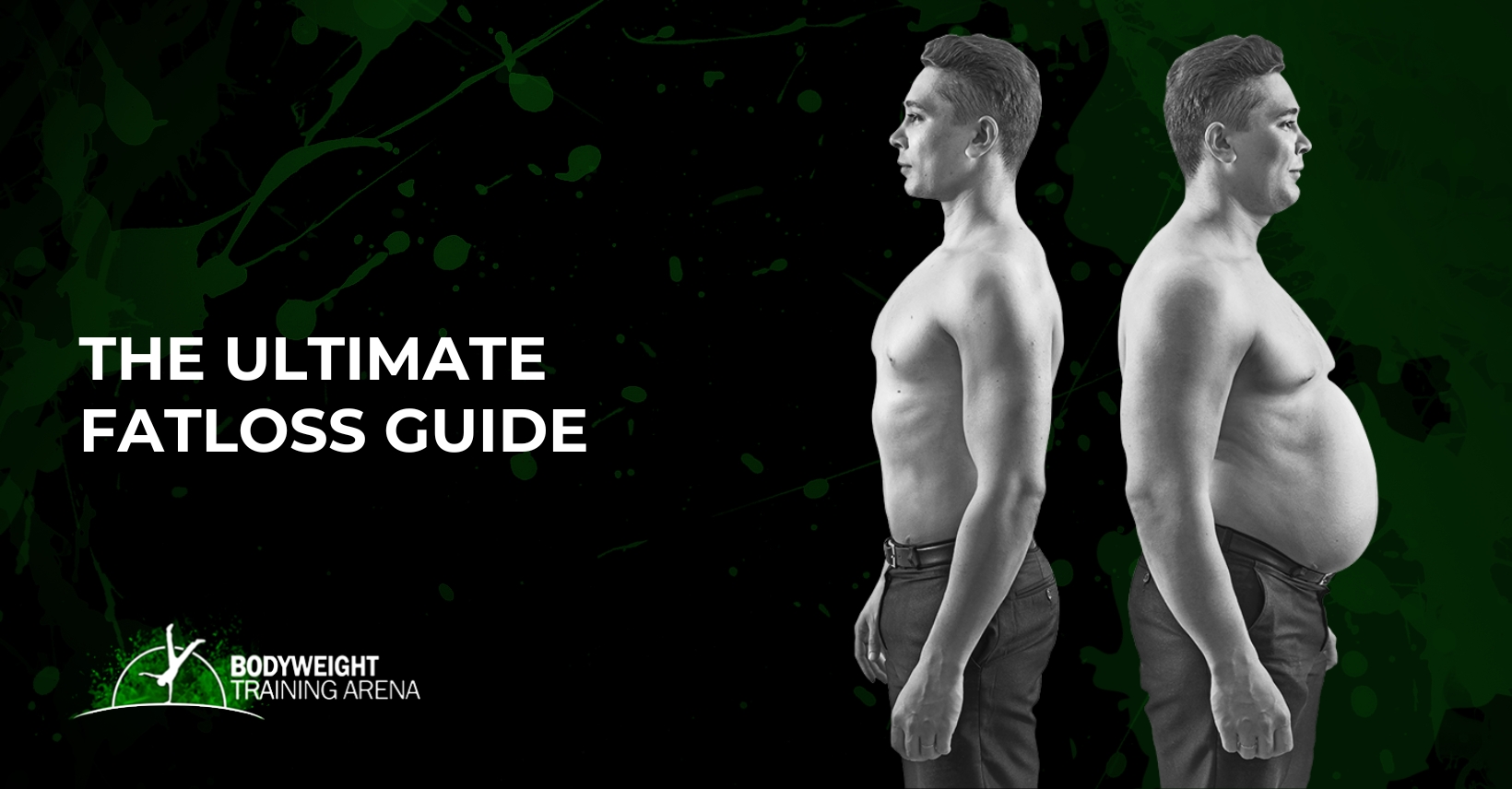


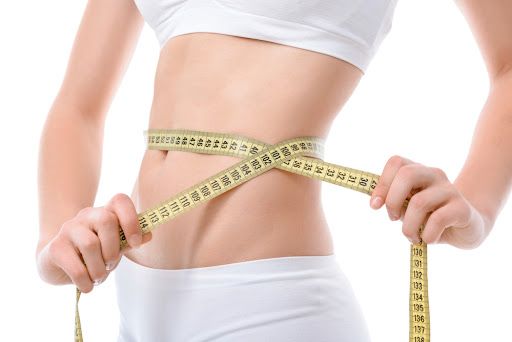
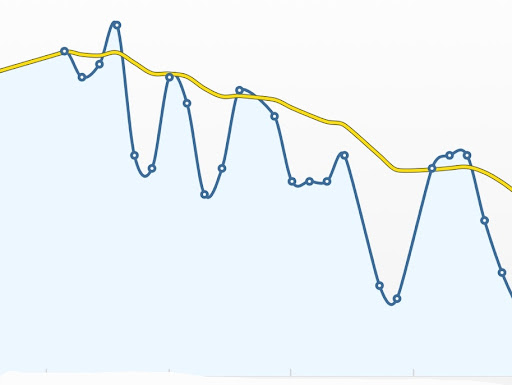
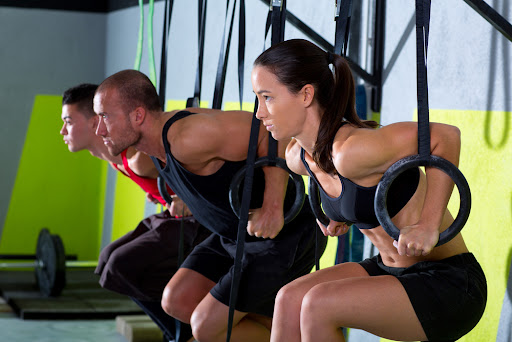

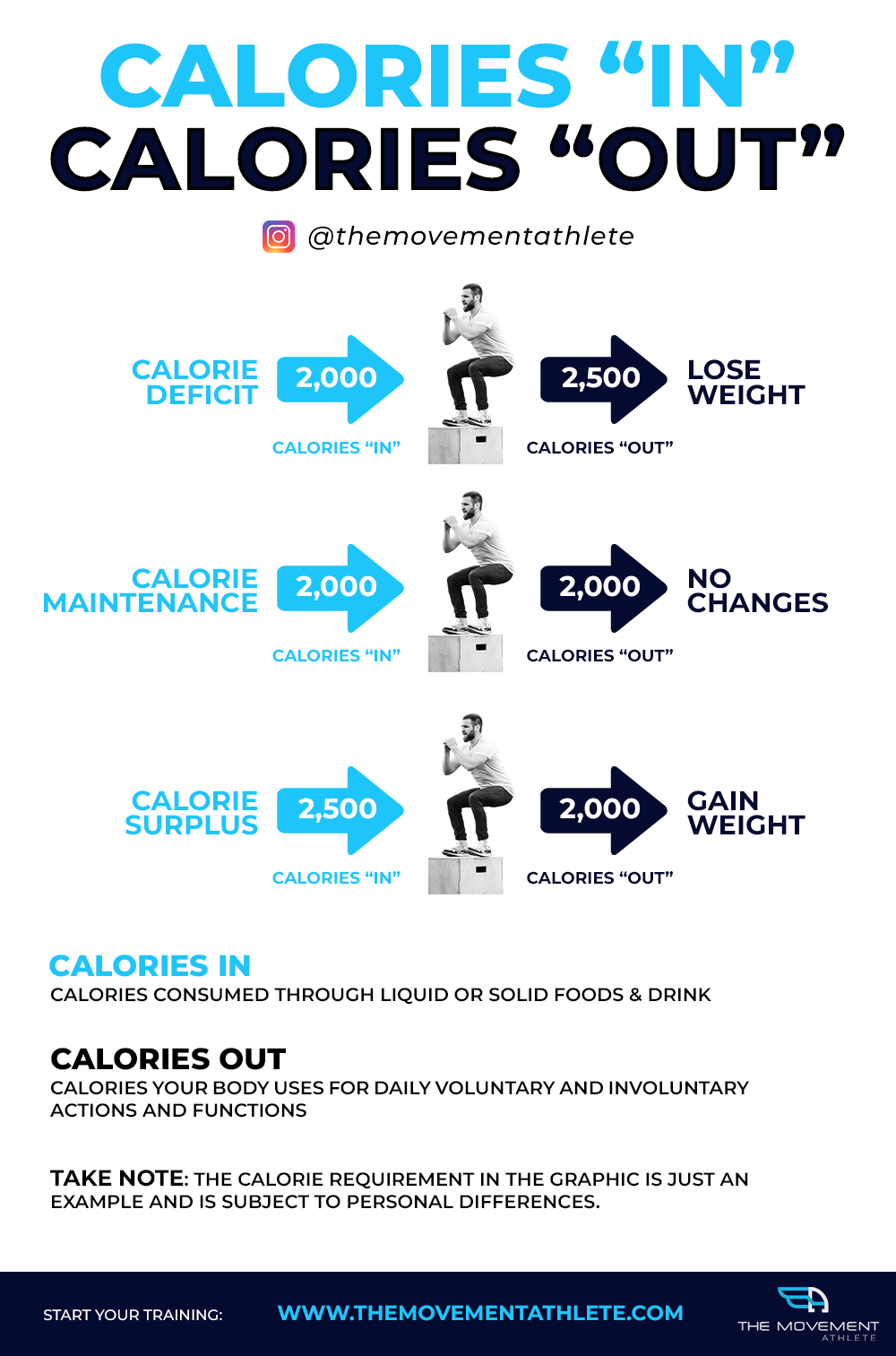






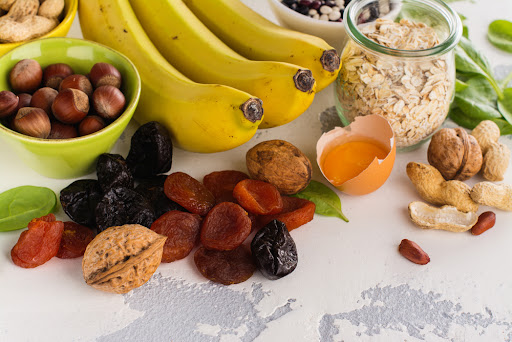

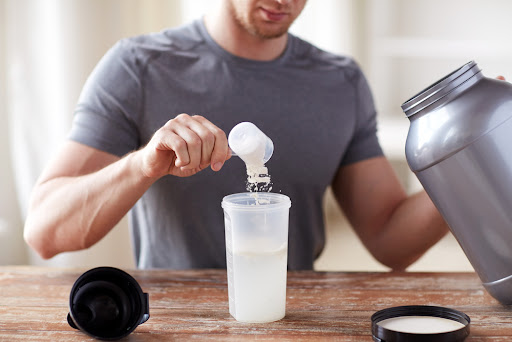



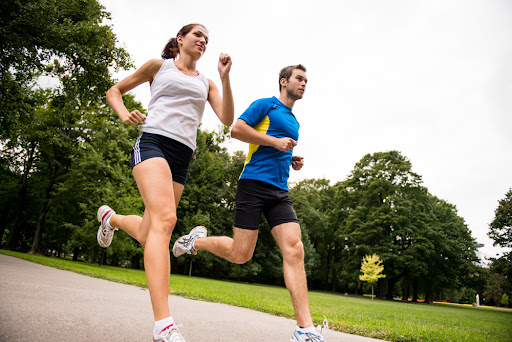
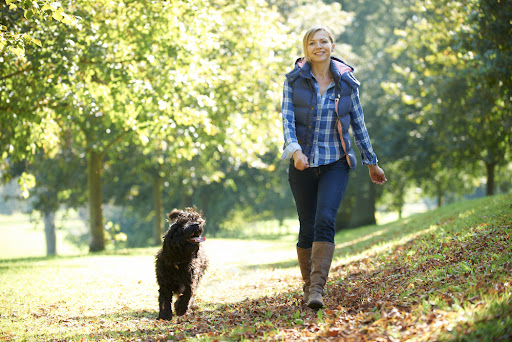
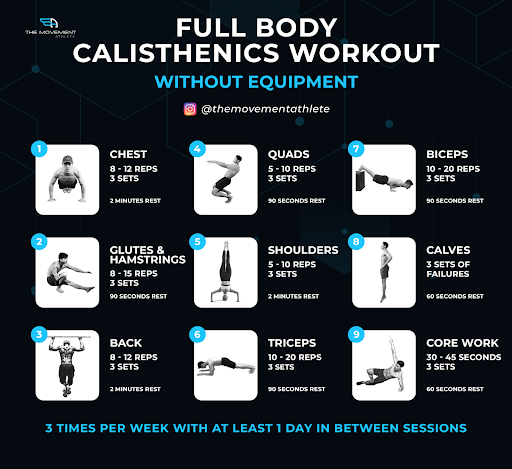

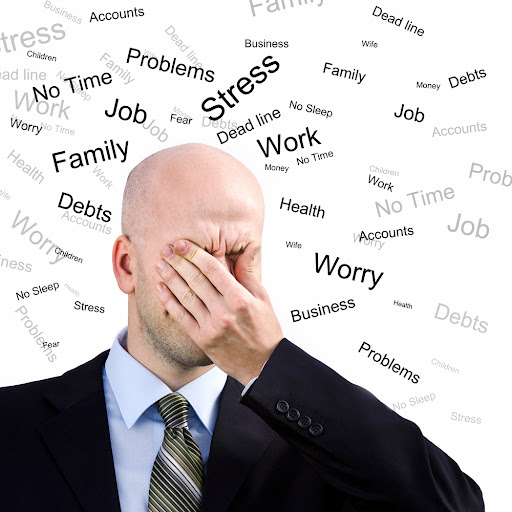
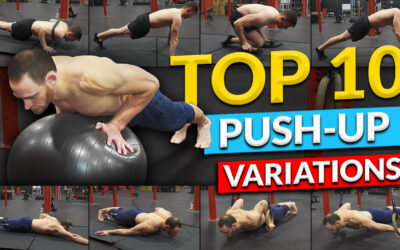
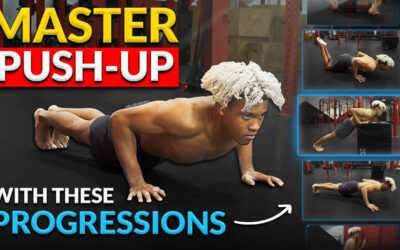

0 Comments